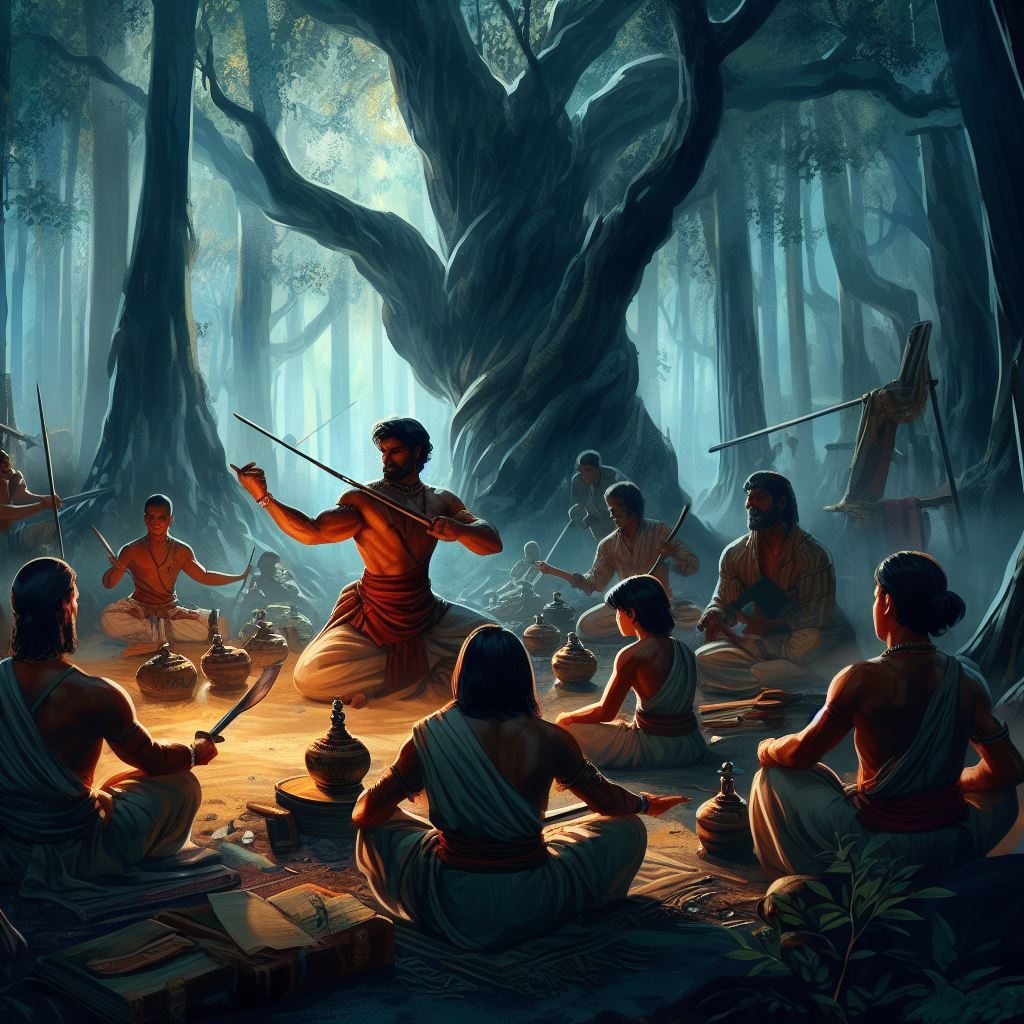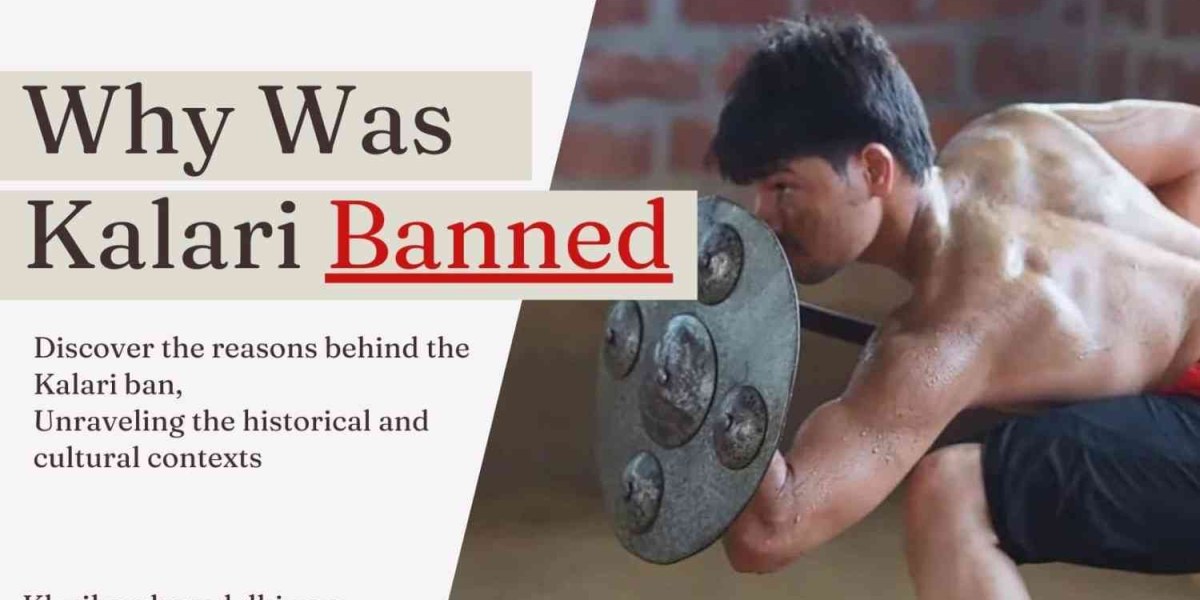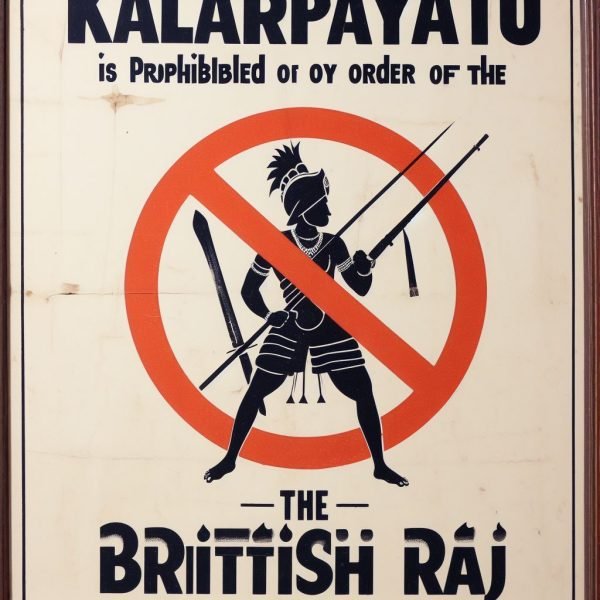What is Kalari?
Kalari is a short form of Kalaripayattu, an ancient martial art from Kerala, India. It has a long-standing history and uniqueness among Indian martial arts, as it combines physical, mental, and spiritual aspects of training. Kalari is not just a way of fighting, but also a way of life, culture, and heritage of India.
Its unique aspect is that this Martial Art of Kalari is derived directly from nature.
It is completely based on the natural survival instincts of any living being and its unique techniques of combat are based on the bizarre and strategic survival skills of animals in their wild. The form majorly focuses on making a mind and body as adaptable to any circumstances as animals.
Why was Kalari Banned?
Kalari faced a major challenge and threat in the 19th century when the British colonial authorities imposed a ban on it in Kerala. This ban had significant political and Imperial reasons which we discuss below, this ban had far-reaching repercussions on the future development and preservation of Kalari.
The British wanted to establish their control and dominance over Kerala, which was rich in natural resources, especially spices which were invaluable to the local people.
The main factors and events that led to the ban on Kalari in Kerala in 1804 by the British was the political and military threat posed by the warrior kings of Kerala who were well trained in the art of Kalari and used it naturally as a means of defense and rebellion against the British rule. Britishers faced fierce resistance from the local rulers and fighters, who were trained in Kalari and used various weapons and techniques to counter the British forces. They feared that the martial art would embolden a revolution and lead to the end of their rule.
Did you know that what we practice today is just the revived version left out of original martial art of Kalaripayattu that was once banned for its dangerous and ferocious character?
One of the most prominent examples of this resistance was King Pazhassi Raja, who was a warrior prince and de facto head of the kingdom of Kottayam. He waged a guerrilla war against the British from 1793 to 1805, using his trained Kalari fighters and local support. He earned the epithet “Kerala Simham” (“Lion of Kerala”) for his bravery and courage. The Britishers were not ready for this courageous act of revolt. So the fear and prejudice of the British towards the native martial arts which they considered barbaric, dangerous, and violent art that threatened their authority and security paved the way for its banishment.
They also misunderstood some of the rituals and philosophies of Kalari, such as the worship of weapons, the use of medicinal oils, and the concept of vital points or marmas. They regarded these as signs of idolatry, witchcraft, and sorcery. Between 1804 and 1947, they also prohibited the ownership of weapons and the practice of weapon training.
Needless to say, in general, The British had a colonial mindset that viewed the Indian people as uncivilized and backward, and their traditions and practices as superstitious and irrational. They wanted to impose their own culture and values on the Indians and suppress any form of dissent or opposition.
What were the Consequences of the Kalari Ban?
The Kalari ban had a devastating effect on the cultural heritage of the Malabar region of Kerala and a sudden decline in Kalari gurukuls and martial arts practice as a whole. The after-effects also led to the closure of most of the major Kalari training grounds (Kalari sangham) and the loss of many masters (gurukkal) and practitioners (sishya).
The British enforced the ban with harsh measures, such as confiscating weapons, arresting or killing instructors, burning down schools, imposing fines or imprisonment on students, and spreading propaganda against Kalari.
Many Kalari practitioners were forced to abandon or practice Kalari in hidden underground arenas in silence, or to migrate to other regions or countries where they could continue it. As a result, Kalari suffered a severe setback in its popularity, prestige, and transfer of authentic teachings from one generation to another.

Gurukal teaching Kalari in forest
What we see today is the result of the survival and preservation of Kalari in some remote areas and communities, where it was practiced secretly or under disguise.
Some great Gurukkals of Kalari managed to keep alive their tradition of Kalari by passing it on to their family members or trusted disciples in secluded places or under different names.
Some Kalari practitioners practiced Kalari under the guise of folk dances or religious rituals, such as Kathakali or Theyyam. These methods helped to preserve some aspects of Kalari for future generations.
Thanks to the efforts of some dedicated masters, students, and supporters who are the pioneers for the revival and resurgence of Kalari in the 20th century, who revived the vanishing knowledge, public interest, and awareness of Kalari through their secret abhyasa , performances, and some written texts.
Notable figures who contributed to Kalari Revival
Kottackkal Kanaran Gurukkal was a Kalaripayattu gurukkal, who single handedly led the movement of the revival of Kalarippayattu after British rule with the support and full-fledged aid of his two devoted shishyas, C.V.Narayanan Nair (1893-1979), also known as C.V.N.Kalari Gurukkal, who established several kalari sanghams across Kerala and trained many students in both northern (vadakkan) and southern (thekkan) styles of Kalari.
He also wrote several books on Kalari history, philosophy, and techniques. He is widely regarded as one of the pioneers of the modern Kalari revival movement and Chirakkal T. Sreedharan Nair, who rose to prominence as one of the primary reasons for Kalari’s conservation by preserving and transmitting the martial art during the twentieth century through his unparalleled skills, practice, and books that act as a guidance for the art of Kalari today.
Conclusion
In this article, we have seen how Kalari, an ancient martial art from Kerala, faced a ban by the British colonial authorities in the 19th century, and how it declined, survived, and revived over time. Kalari is an art form that has sustained the test of time and today we have more than 1000 kalaris all over India and worldwide and is a constantly expanding art of India today.


